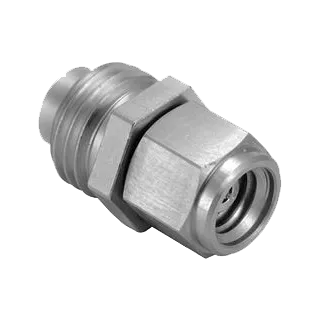
The Male 1.0 mm RF connector, sometimes referred to as the plug, can be identified by its centre pin and an outer shell with internal threading. This design allows it to mate seamlessly with the female connector, which is equipped with a matching receptacle and an outer shell with external threading. It looks similar in shape to the SMA Male connector.

The male connector's outer shell is a crucial component with a dual function. It is typically crafted from stainless steel, giving it a robust and durable finish. The shell not only mechanically secures the connection through its threaded interface but also offers electrical grounding. It also shields against external electromagnetic interference, preserving the RF signal's integrity.
The connector's threaded design is pivotal for ensuring the connector's durability, especially during multiple connection and disconnection cycles. As a laboratory connector, users should exercise a high level of caution during the mating process to prevent cross-threading, which could potentially damage the connector and degrade the RF signal. It's advisable to hand-tighten the connector or use a torque spanner as per the manufacturer's guidelines to ensure optimal performance.